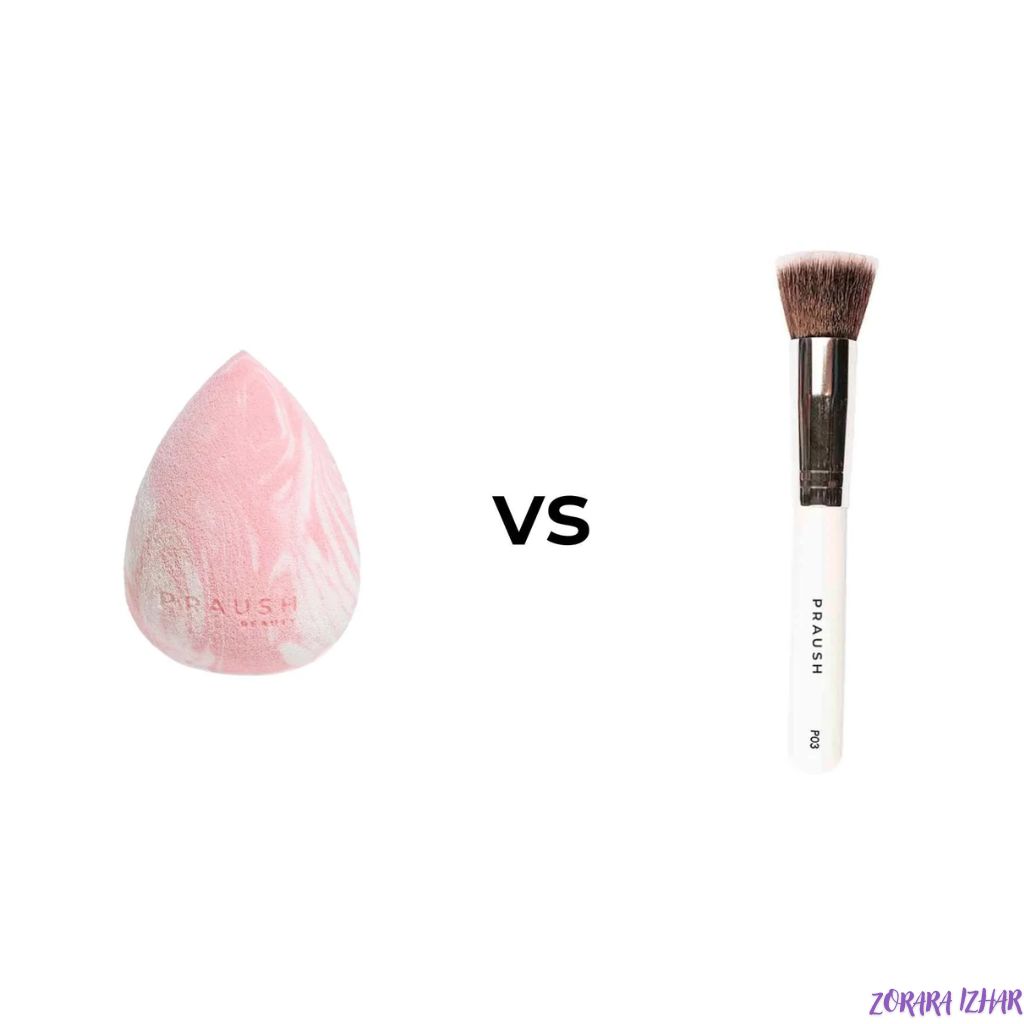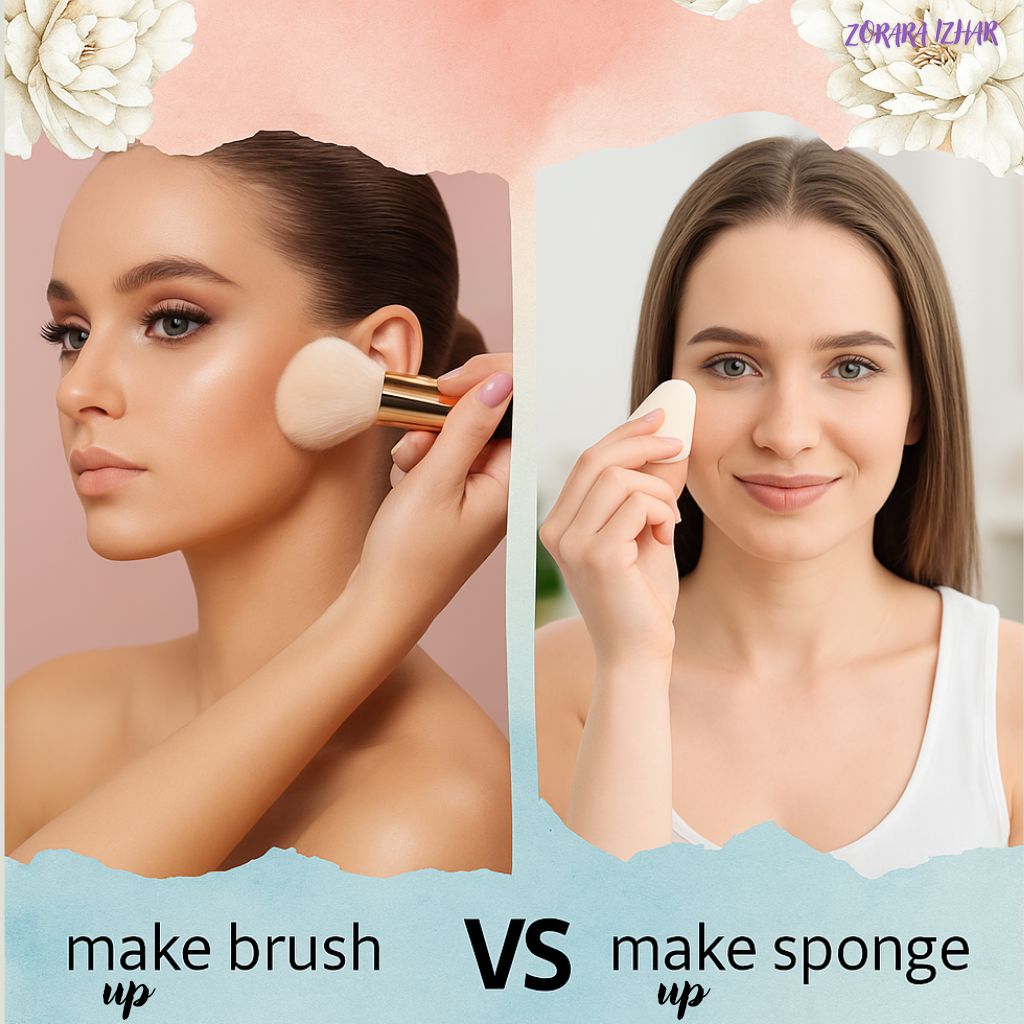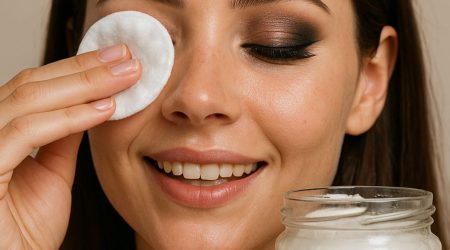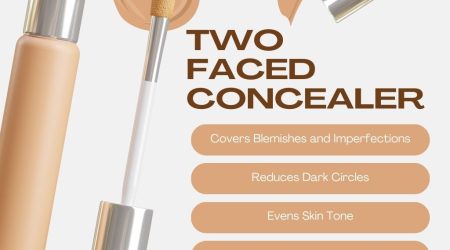3
May
Makeup Brush vs Sponge: Which One Is Better for You?
| Main Heading/Subheading | Tag |
|---|---|
| H1: Makeup Brush vs Sponge: Which One Is Better for You? | H1 |
| Introduction | H2 |
| History and Evolution of Makeup Tools | H2 |
| Overview: What Is a Makeup Brush? | H2 |
| Types of Makeup Brushes | H3 |
| Pros and Cons of Makeup Brushes | H3 |
| Overview: What Is a Makeup Sponge? | H2 |
| Types of Makeup Sponges | H3 |
| Pros and Cons of Makeup Sponges | H3 |
| Application and Blendability Comparison | H2 |
| Coverage and Finish Differences | H3 |
| Skin Type Suitability | H2 |
| Makeup Brush vs Sponge for Oily Skin | H3 |
| Makeup Brush vs Sponge for Dry/Sensitive Skin | H3 |
| Hygiene and Maintenance | H2 |
| How to Clean Brushes Properly | H3 |
| How to Sanitize and Maintain Sponges | H3 |
| Cost Comparison: Brush vs Sponge | H2 |
| Longevity and Durability | H2 |
| Environmental Impact and Sustainability | H2 |
| Travel Friendliness and Portability | H2 |
| What the Experts Say: MUAs and Dermatologists Weigh In | H2 |
| Common Mistakes When Using Brushes or Sponges | H2 |
| Tips for Beginners: How to Choose Between Brush and Sponge | H2 |
| Final Verdict: Which One Is Better for You? | H2 |
| FAQs | H2 |
| Conclusion | H2 |
Introduction
The right makeup applicator can make or break your beauty routine. Whether you’re going for a natural daytime look or full-glam coverage, knowing the pros and cons of each tool can dramatically enhance your application technique. This guide dives into the history, usage, effectiveness, and expert opinions on makeup brushes and sponges, so you can confidently choose the one that works best for you.History and Evolution of Makeup Tools
Makeup brushes date back to ancient Egypt, where early versions were crafted from animal hair. Sponges became popular much later, gaining traction in the 20th century and revolutionizing modern makeup routines with the launch of the Beauty Blender in 2007. Over time, both tools have evolved to serve diverse needs in the beauty industry, offering various textures, shapes, and materials. Overview: What Is a Makeup Brush?
Overview: What Is a Makeup Brush?
A makeup brush is a tool with bristles made from synthetic or natural fibers used to apply powder, cream, or liquid products to the face. Brushes come in many shapes and sizes, each tailored to specific areas and types of makeup, from foundation to highlighter.
Types of Makeup Brushes
- Foundation Brush: Flat or dome-shaped, ideal for cream or liquid foundation.
- Powder Brush: Large, fluffy brush for setting powder.
- Blending Brush: Soft, tapered for blending eyeshadow.
- Angled Brush: Perfect for contouring or precise blush application.
- Fan Brush: Lightly applies highlighter or sweeps away fallout.
Pros and Cons of Makeup Brushes
Pros:- Provides buildable coverage
- Great for precise application
- Long-lasting with proper care
- Multiple brush shapes for targeted areas
- Requires frequent cleaning
- May leave streaks if not used properly
- Can be expensive for quality sets
Overview: What Is a Makeup Sponge?
A makeup sponge is a soft, porous applicator designed for dabbing and blending liquid or cream makeup. The most iconic example is the Beauty Blender, but many alternatives exist. Sponges are often used damp to provide a seamless, dewy finish.Types of Makeup Sponges
- Classic Teardrop Sponge: Ideal for blending all over the face
- Flat-Edge Sponge: Great for baking and contouring
- Mini Sponges: Perfect for under-eye and spot coverage
- Silicone Sponge: Less absorbent, more hygienic
Pros and Cons of Makeup Sponges
Pros:- Blends makeup seamlessly
- Great for dry or textured skin
- Easy to use for beginners
- Less likely to leave streaks
- Absorbs a lot of product
- Requires regular replacement
- Can harbor bacteria if not cleaned properly
Application and Blendability Comparison
Makeup brushes allow for targeted application and layering, offering a more sculpted finish. They are excellent for contouring, detailed eye looks, and powder products. Sponges, on the other hand, excel in blending foundation and concealer smoothly into the skin. A damp sponge creates a soft-focus, skin-like finish that looks natural and radiant.Coverage and Finish Differences
| Tool | Coverage Type | Finish Style |
|---|---|---|
| Brush | Medium to Full | Matte to satin |
| Sponge | Sheer to Medium | Dewy to natural |
Skin Type Suitability
Makeup Brush vs Sponge for Oily Skin
Makeup brushes are typically better for oily skin as they don’t add extra moisture. They help keep the finish matte and allow precise control over product placement.Makeup Brush vs Sponge for Dry/Sensitive Skin
Sponges are more suitable for dry or sensitive skin. Used damp, they press moisture into the skin and avoid irritation that bristles might cause.Hygiene and Maintenance
Proper hygiene is crucial when it comes to makeup tools, as they come in direct contact with your skin and can accumulate dirt, oil, and bacteria.How to Clean Brushes Properly
Makeup brushes should be cleaned at least once a week, especially if you use them daily. Steps for Cleaning Brushes:- Rinse the bristles under lukewarm water.
- Apply gentle soap or brush cleanser to a silicone cleaning pad or your palm.
- Swirl the brush gently until the water runs clear.
- Rinse again thoroughly to remove all soap.
- Gently squeeze out excess water with a clean towel.
- Reshape and air-dry the brushes flat or upside-down to prevent water from damaging the handle.
How to Sanitize and Maintain Sponges
Sponges are more prone to harbor bacteria due to their porous nature. They should be cleaned after every use and replaced every 1 to 3 months. Cleaning Method:- Soak the sponge in warm water with mild soap or baby shampoo.
- Squeeze and release repeatedly until clean.
- Rinse thoroughly under clean water.
- Let air-dry in a well-ventilated area.
Cost Comparison: Brush vs Sponge
 While sponges generally have a lower upfront cost, they need to be replaced more frequently. High-quality brushes, though more expensive initially, can last for years with proper care.
While sponges generally have a lower upfront cost, they need to be replaced more frequently. High-quality brushes, though more expensive initially, can last for years with proper care.
| Tool | Average Price | Replacement Frequency |
|---|---|---|
| Sponge | $5 – $20 | Every 1–3 months |
| Brush | $10 – $50+ | Every 1–2 years |
Longevity and Durability
Makeup brushes are designed for long-term use and often come with durable handles and metal ferrules. With proper maintenance, they can serve you for years. Sponges, by contrast, break down faster and become less effective over time, especially with regular washing.Environmental Impact and Sustainability
From an eco-conscious perspective, brushes tend to be more sustainable due to their longevity. Synthetic, cruelty-free brush options have become widely available and environmentally friendly. Sponge users often discard and repurchase them regularly, contributing to more waste. However, biodegradable sponges and recyclable options are emerging as greener alternatives.Travel Friendliness and Portability
Sponge:- Lightweight and compact.
- Can be used for multiple product types (foundation, concealer, even cream blush).
- Risk of remaining damp, potentially harboring bacteria in makeup bags.
- Can be bulky if you carry multiple types.
- Needs a protective case to avoid bristle damage.
- No risk of moisture retention.
What the Experts Say: MUAs and Dermatologists Weigh In
Makeup artists (MUAs) often prefer brushes for editorial looks, precision, and control. Brushes work well on clients of all skin types and allow for layering. Dermatologists, however, often recommend sponges for sensitive skin due to their soft texture. They also stress the importance of hygiene regardless of the tool used.Common Mistakes When Using Brushes or Sponges
- Using a sponge dry: Always use it damp for the best blend.
- Overloading the brush with product: This leads to patchy application.
- Not cleaning tools regularly: Causes breakouts and product buildup.
- Using the wrong brush shape: Each brush is designed for specific applications.
- Storing tools in damp environments: Especially sponges—this leads to bacteria growth.
Tips for Beginners: How to Choose Between Brush and Sponge
- For a natural, dewy finish → Start with a sponge.
- For full coverage or sculpted looks → Try a foundation brush.
- If you’re on a tight budget → Go for a sponge; it multitasks well.
- Sensitive or acne-prone skin? → Sponges are gentler.
- Want long-term value? → Invest in a quality brush set.
Final Verdict: Which One Is Better for You?
Both tools have their strengths and limitations. The best tool depends on your skin type, makeup preferences, budget, and routine.- Choose a brush for versatility, control, and longevity.
- Choose a sponge for a seamless, glowy finish and gentle application.
FAQs
1. Can I use a brush and a sponge together? Yes! Many pros apply foundation with a brush and then blend it out with a damp sponge for a flawless finish. 2. Is a makeup sponge better for dry skin? Absolutely. Sponges help retain moisture and are gentler on dry or textured skin. 3. How often should I replace my makeup brush? With proper cleaning, brushes can last 1–2 years or longer. 4. Can sponges cause acne? If not cleaned regularly, yes. Sponges can trap bacteria and lead to breakouts. 5. Are silicone sponges better than regular ones? Silicone sponges are more hygienic and waste less product, but they don’t blend as seamlessly as traditional sponges. 6. What tool do makeup artists prefer? Most use a combination of both. Brushes for control, sponges for blending and touch-ups.Conclusion
In the battle of makeup brush vs sponge: which one is better for you?, the answer lies in your unique needs. If you love control and definition, go for brushes. If you prefer ease, speed, and a dewy glow, opt for a sponge. Or better yet—embrace both and level up your beauty game!Share this post
RELATED
Posts
How to prep your skin before makeup?
Your makeup is only as good as the canvas underneath. If you’ve ever struggled with patchy foundation, creased concealer, or uneven texture, the real culprit might not be your products—it could be your skin prep. Knowing how to prep your...
Is Coconut oil good for makeup removal?
If you're on the hunt for a natural, effective, and affordable makeup remover, you’ve probably heard about coconut oil. But is coconut oil good for makeup removal?
Yes—coconut oil is not only good, it's excellent for removing even stubborn makeup like...




